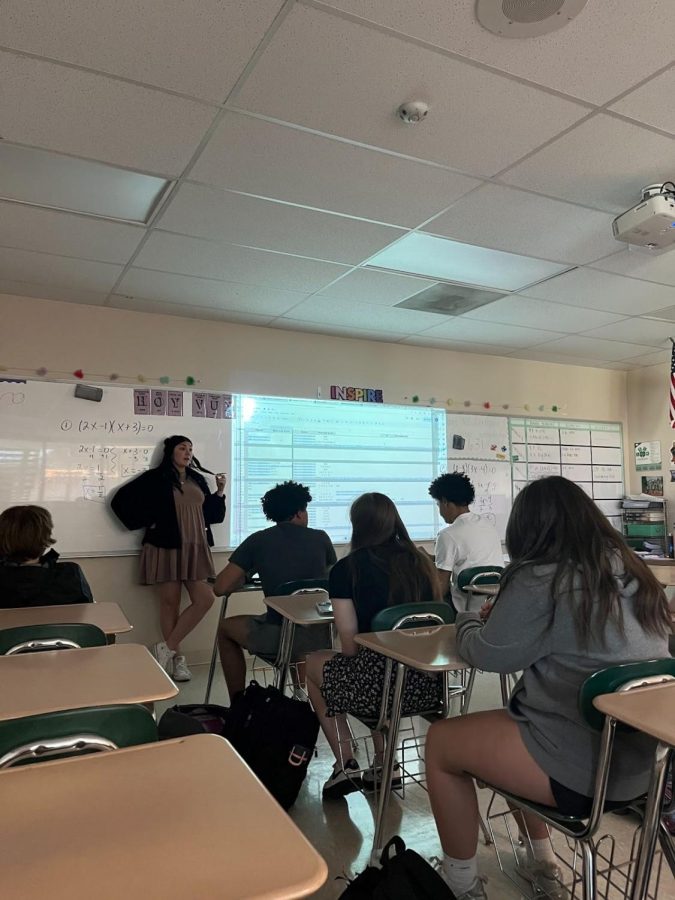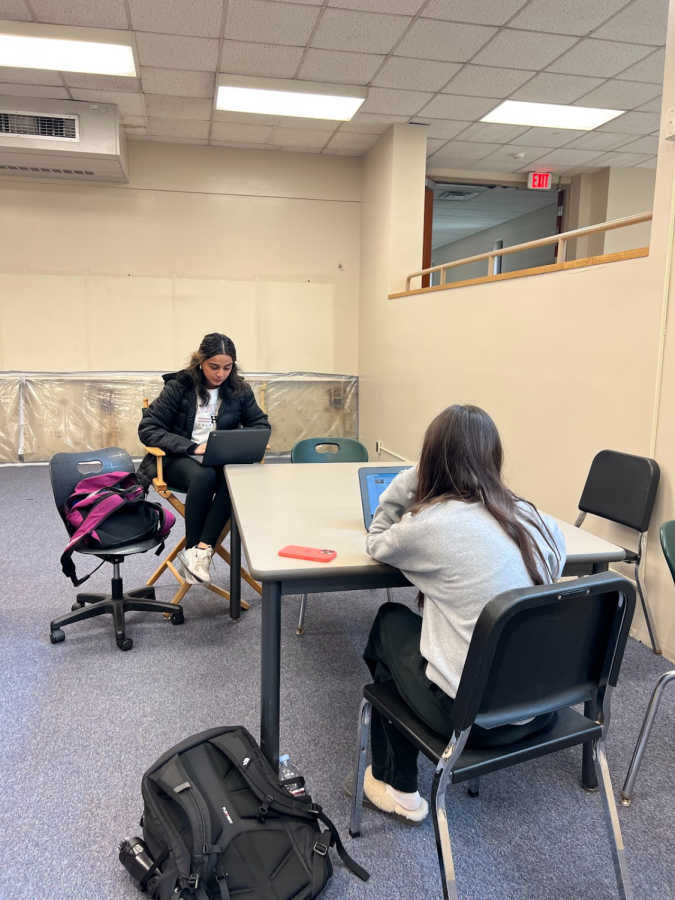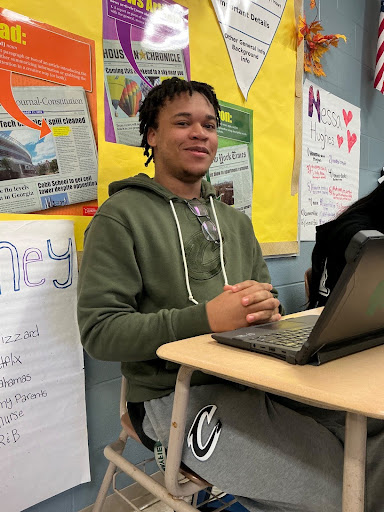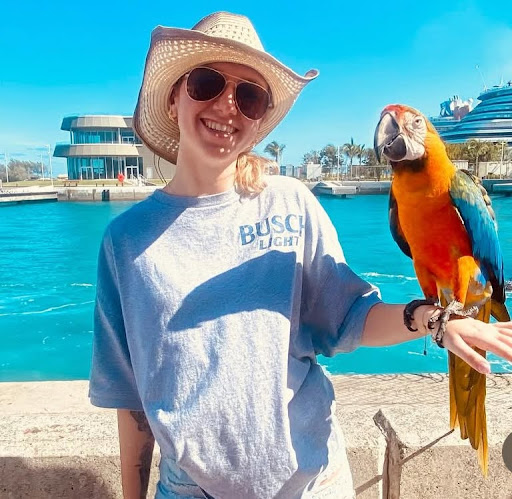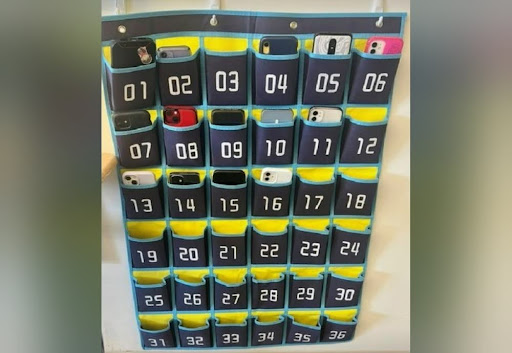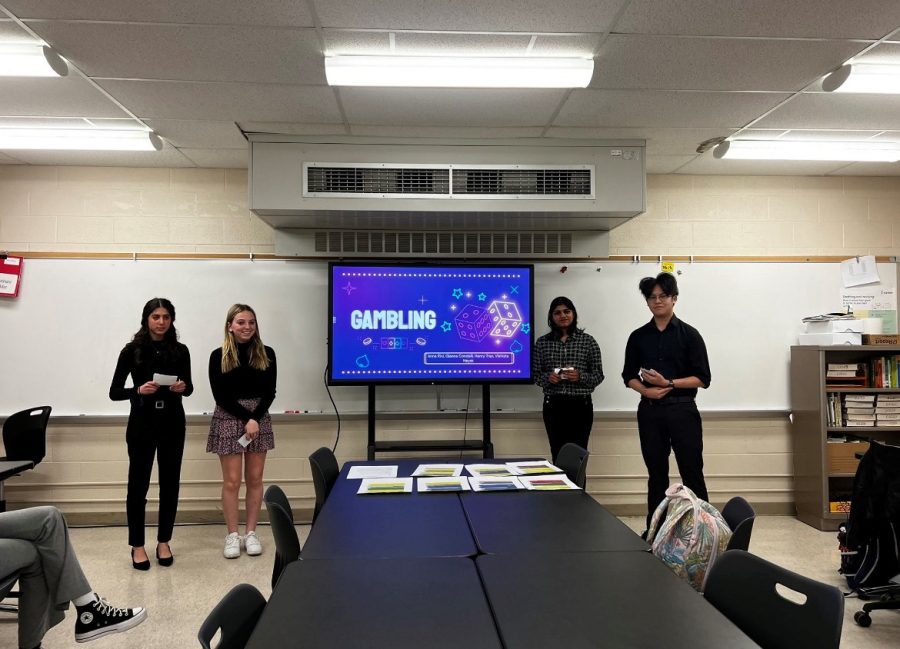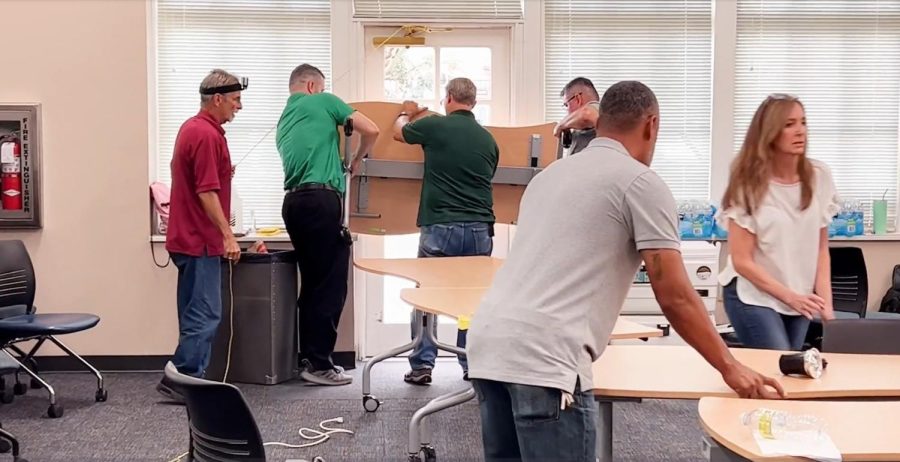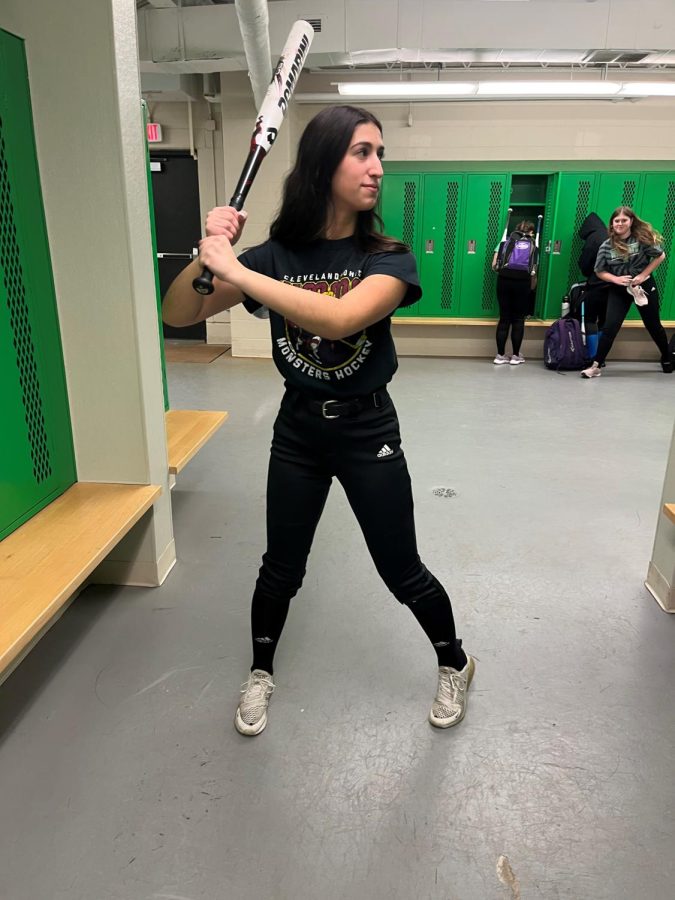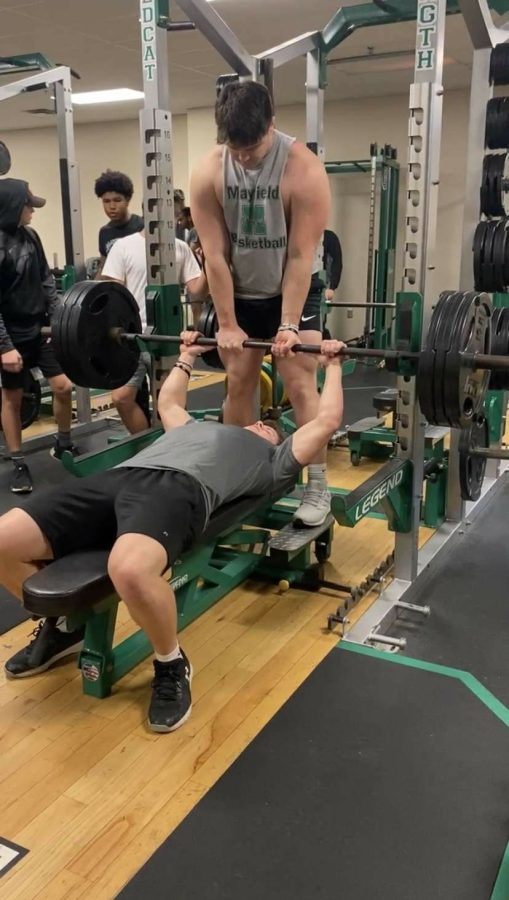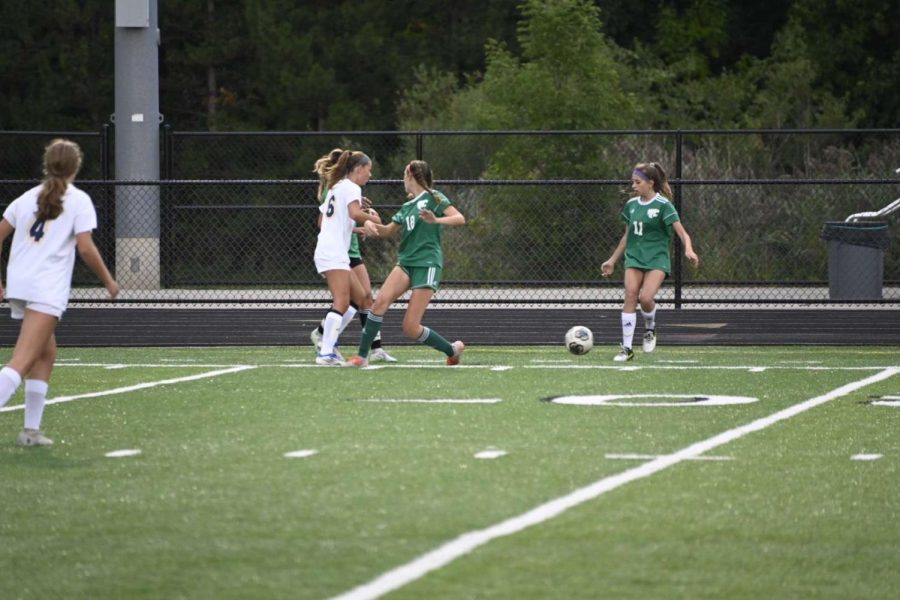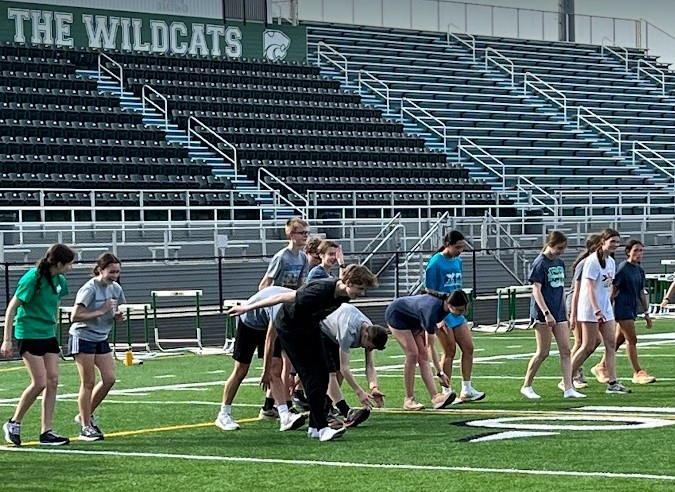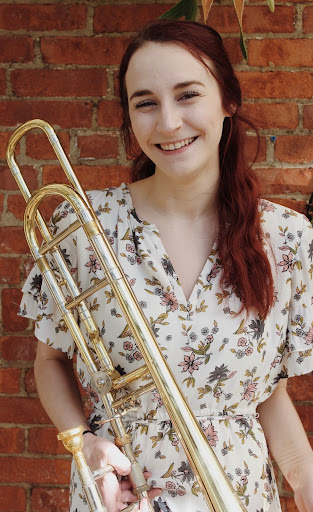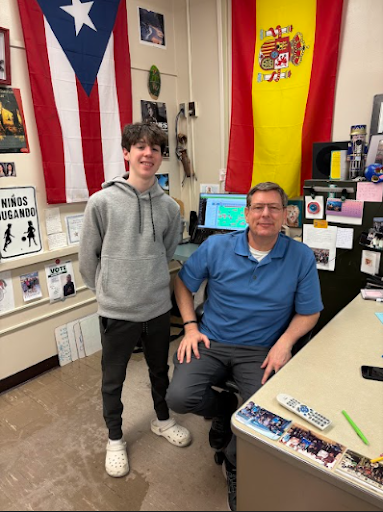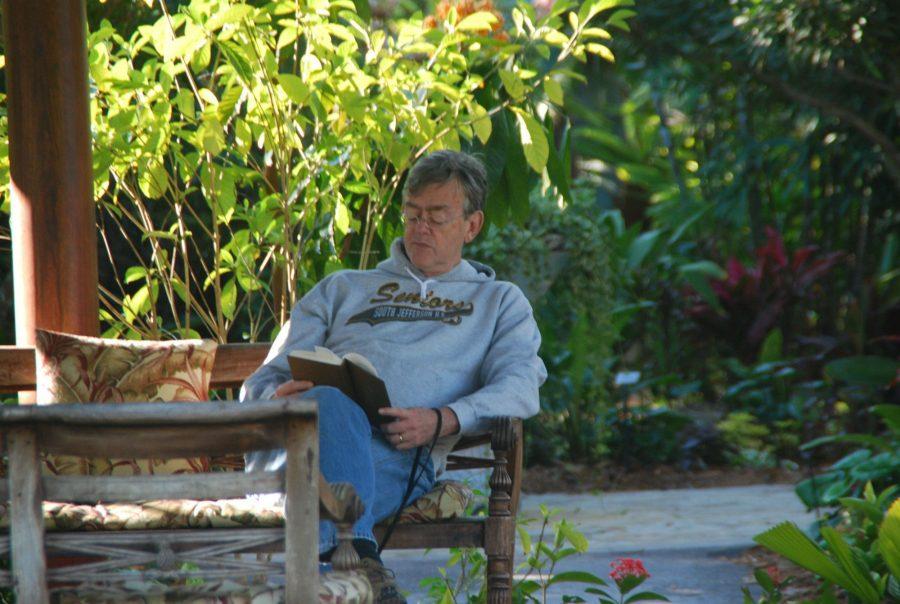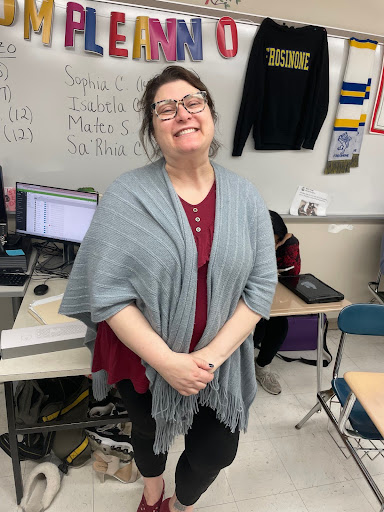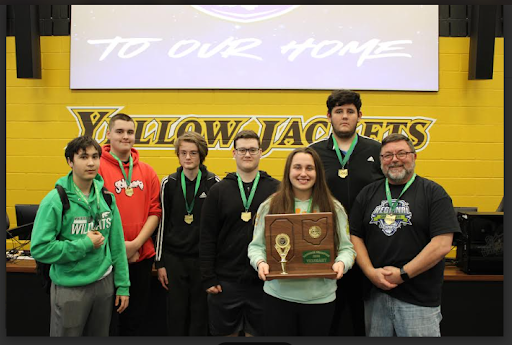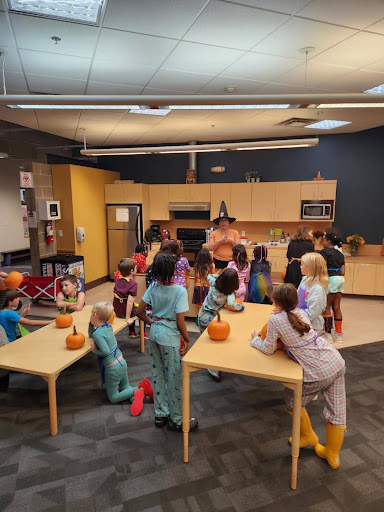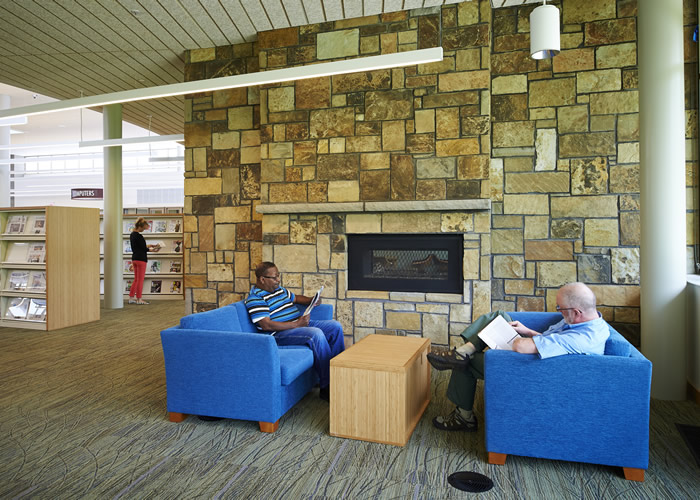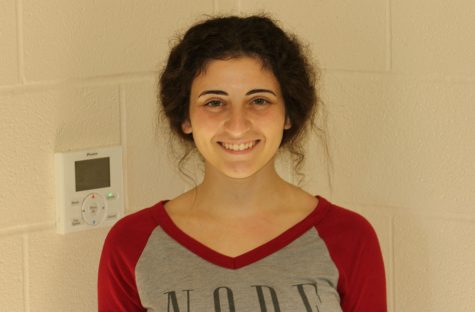Synchronized swimming team prepares for season
March 14, 2016
The girls huddled together on cold benches and listened as their audience grew. Shivers ran up and down their spines though they weren’t cold, and the nose plugs glued to their faces created an odd burning sensation. The nerves; the glitter; the fatigue; it was all a lot to handle.
But their countless hours of practice and rehearsal had led up to these 30 minutes. The team lined up at the edge of the pool, dove in, and held their legs perfectly adjacent to the surface of the water. They were ready.
This was the set-up that an audience member would’ve observed at the synchronized swimming show last year, and this similar picture will be painted at the end of the season this year in the team’s annual performance for which they will start to refine between the end of February and May.
The team’s coach, Cindy Hinkle, is eager to start the new season and has already checked in with her previous members to see if they’ll be able to join again this year. But the team cannot simply jump right into learning routines for their performance.
“The first week is designated as the ‘skill week’ where members learn new moves,’ said Hinkle. ‘There’s a vast range of skill level between all the members and this is really the time where I sit and evaluate the strengths and weaknesses of not only the newbies but also the veterans. If I observe that an inexperienced member is having trouble with a specific move, I’ll pair them up with older members who have a strong suit in that move.”
After that first week, the team moves on to memorizing the routines, first out of water and then in. These routines are drawn up by the oldest members of the team in that first informational week because, of course, the older members are already familiar with the swimming moves.
Hinkle said, “This is also the time where the teammates bond and that’s important because, as much as synchro is an individually learned sport, it is mostly a team sport; the members have to be able to rely on each other.
Some may not believe that it takes new members an entire week, or ten hours in total, to learn synchronized swimming moves and apply them to routines but synchro is more difficult than the swimmers make it look.
“People think that synchro is easier than it actually is. They don’t realize what goes into it: the memorization, the practice, even the amount of time that you have to hold your breath,” said Hinkle. “It doesn’t seem like 5 counts [40 seconds] is a long time but when you’re stuck underwater or lifting someone above water and waiting for the count where you can take a breath, it’s actually very hard and sometimes scary.”
Working as hard as the team does, synchro provides obvious physical benefits that the team members reap. Madeline Linsky, a member who is a diving into her third year on the team, said, “It serves as my stress reliever because I get to work out and release endorphins.”
Similarly Michelle Elbadaoui, another two-year returning veteran, said, “It gets my abs worked out and it’s also a way to take a break from running in other sports like cross-country and indoor track.”
Despite how hard the sport is, the team continues to train in the way that they do because, simply put: they want to be ready for their end-of-season show. “I know nerves are a big side effect of preparing for the show,” Hinkle said. “I just want to make sure that [the team] know exactly how much time and effort they put into preparing, and that the weeks and weeks of practice paid off.”
There are also ways that the individual members of the team prepare for the end-of-season show. Linsky said, “I practice my counts at home a lot… I just hang up the count sheet given to us on a wall and practice it over and over until I have it down. Seconds before the show I just laugh a lot because I’m really nervous and I tell my friends that we’re going to do great.”
Although a lot of work is put into it, synchronized swimming is truly enjoyable to the team members included. Elbadaoui said, “… synchro is two hours of stress-relief. It’s also my favorite after-school activity because it … helps you learn teamwork and communication with your teammates.”



